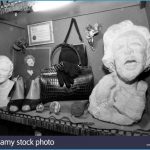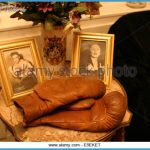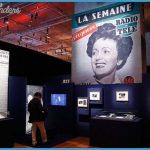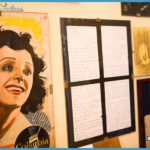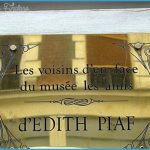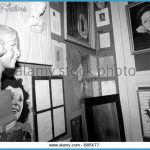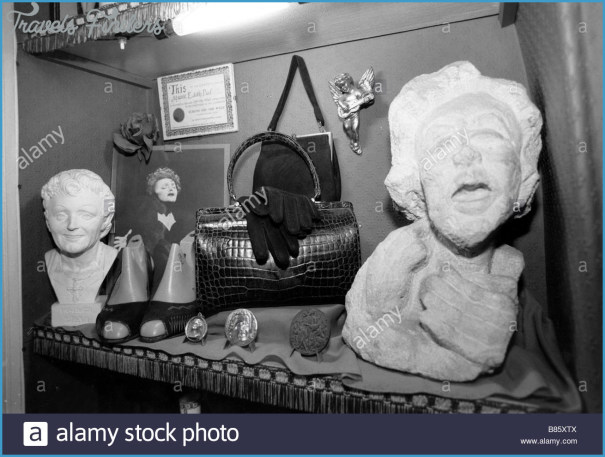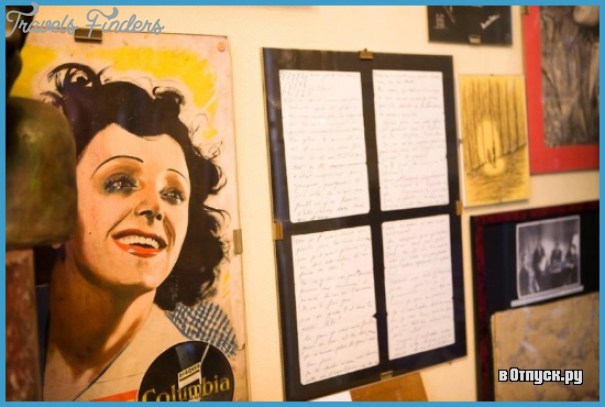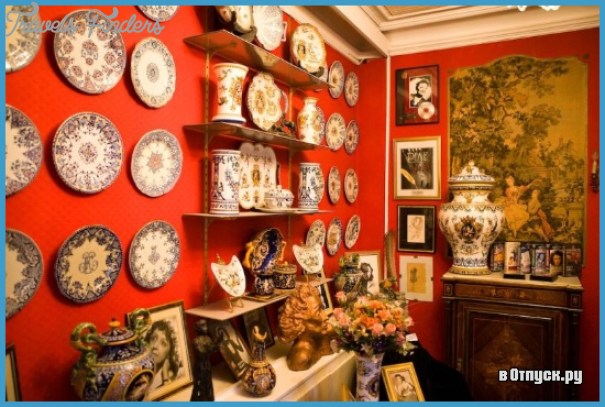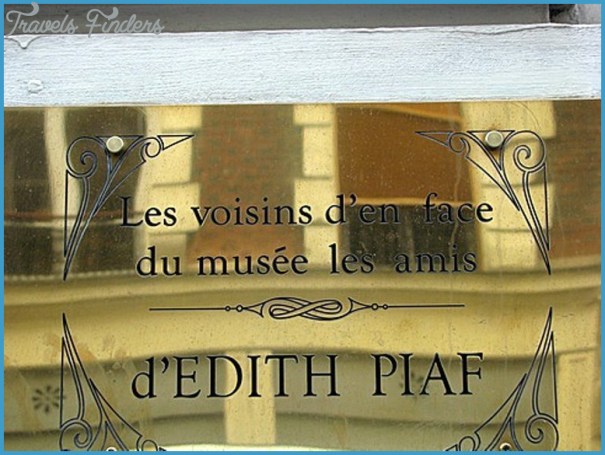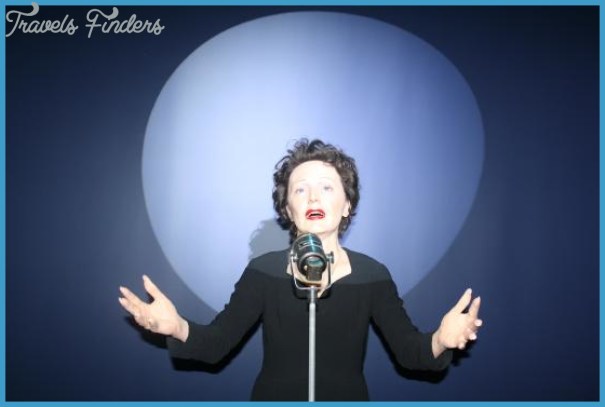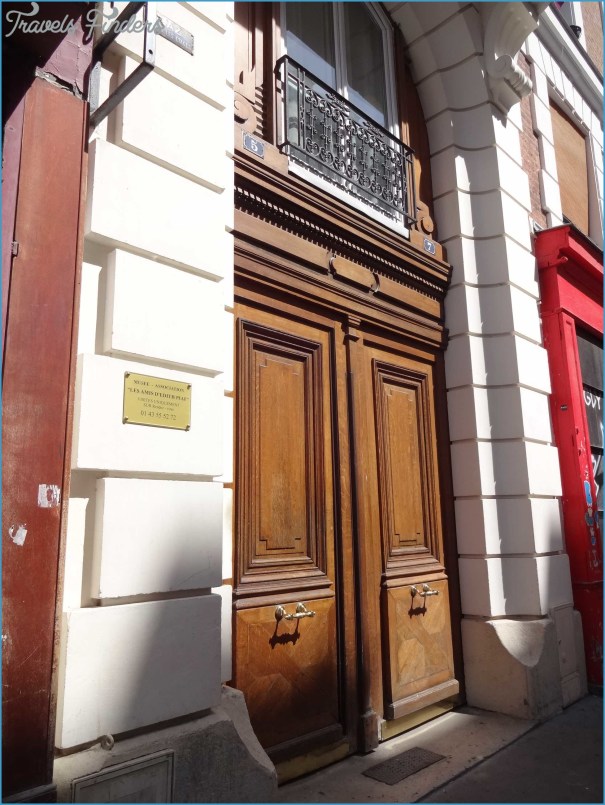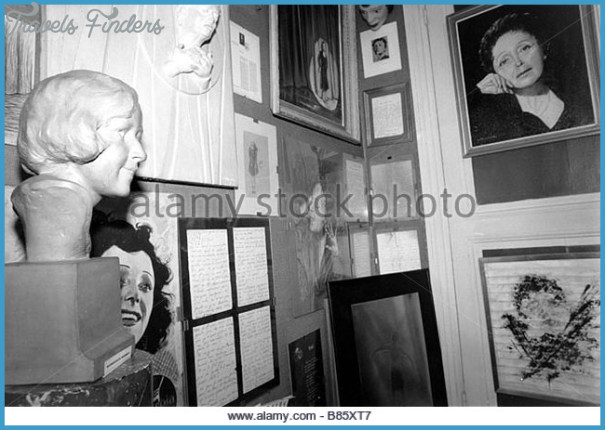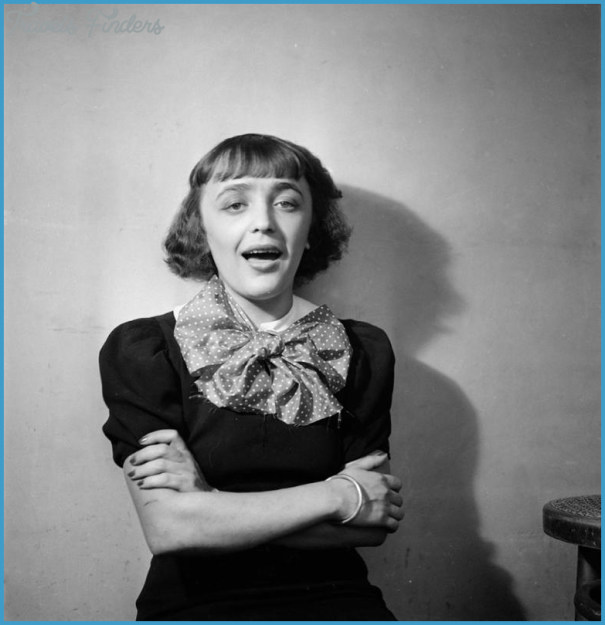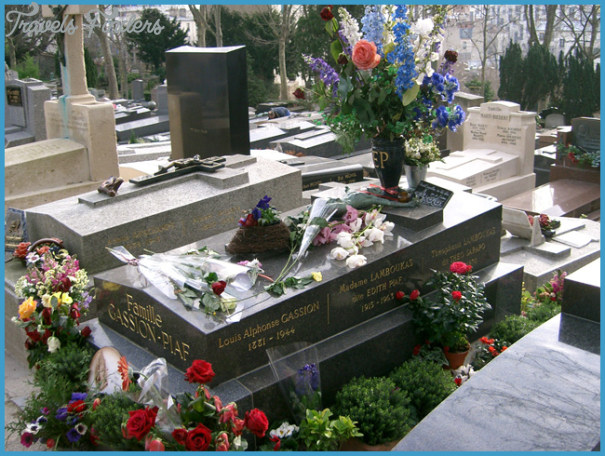PIAF MUSEUM
Edith Piaf was the most loved of French chanteuses. Chiefly she sang songs specially composed for her, but she composed a number herself, probably around 30, among them La vie en rose, the most famous of them all. Piaf was born in 1915 as Edith Giovanna Gassion, in the Belleville area of Paris, in the 19th arrondissement, a fairly seedy region in the east of the city, ethnically rather mixed (her father, an acrobat, was Moroccan; her Parisian mother left her upbringing to an aunt). Her birthplace, on the steps at 72 Rue de Belleville, is marked by a plaque. She worked initially as a street singer until, at 19, she was launched into the night-club world as la mome Piaf’, the little sparrow’ (she was less than five feet, 1.5 m, tall). When she died in 1963 she was buried – without benefit of clergy, because of her life-style – at Pere Lachaise, in the 20th arrondissement, not far from where she was born. She is commemorated by a statue, erected belatedly in 2003, in the Place Edith Piaf, close to the Porte de Bagnolet metro station, in the Rue de la Py.
PIAF MUSEUM Photo Gallery
In that square is the Bar Edith Piaf, something of a shrine to her, with its drawings, photos and posters; the patronne is said to know Piaf’s entire repertory by heart. But she is more fully remembered in the small Musee Edith Piaf, a privately run museum set up in the 11th arrondissement in 1977, in two rooms of the fourth-floor flat of her devotee Bernard Marchois. It is in a large block, close to the Menilimontant metro, in an Bar Edith-Piaf, Paris area again not far from Belleville and one familiar to Piaf from her childhood years; outside, a plaque proclaims the office of the Piaf fan club. A life-size cardboard cut-out of the singer greets you at the entrance, and there is also a large teddy-bear, the gift of her second husband. Some of her furniture is preserved, along with items of jewellery, china, clothes (especially little black dresses), numerous photographs and posters, letters (among them some from Maurice Chevalier), commemorative stamps, and the boxing gloves of her lover Marcel Cerdan. With her voice providing a soft background, the world of the greatest of chanteuses is tellingly evoked.

